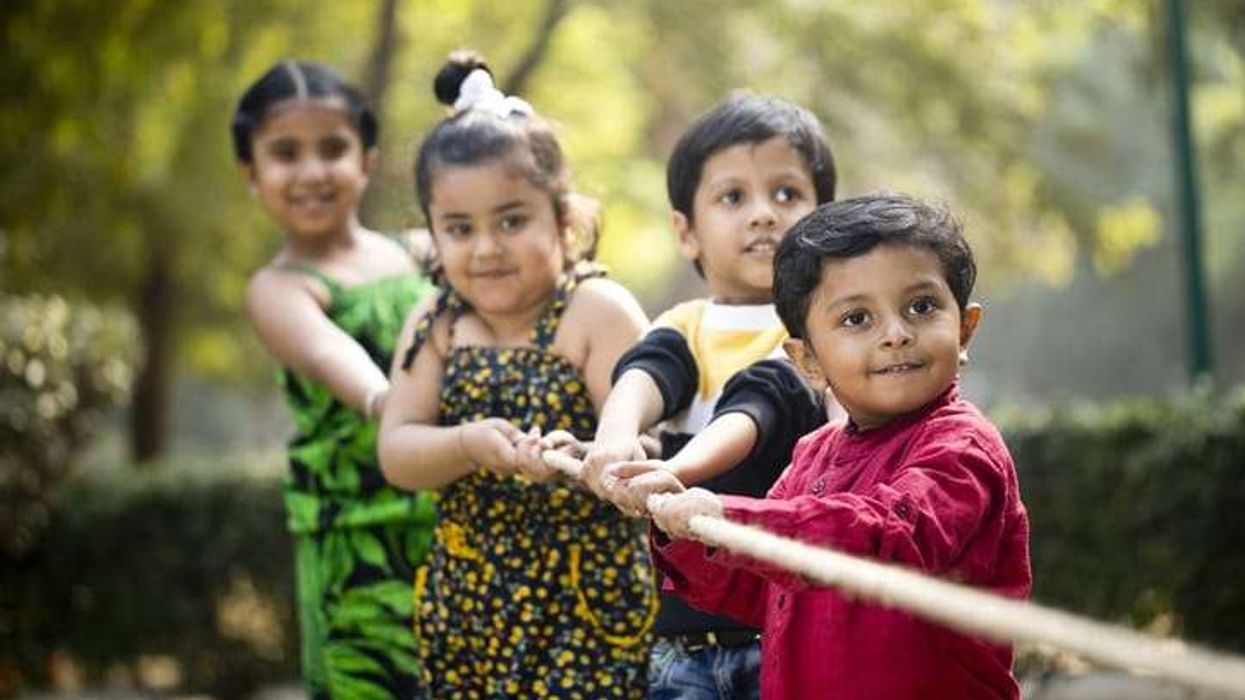by ASJAD NAZIR
THE DU: Fairfield Takeover brings a mix of international dance, pop-up events, performance-parkour, home-grown talent, workshops and more to the heart of Croydon.
One of the headline acts is Los Angeles-based dancer and choreographer Mythili Prakash, who brings her latest creation Here And Now to Croydon as part of Dance Umbrella festival’s takeover of Fairfield Halls. Here And Now explores the human struggle
to be in the present and is inspired by the illusory nature of time.
Eastern Eye caught up with internationally acclaimed Bharatanatyam artist Mythili
Prakash to find out more.
What connected you to dance?
I was born into an environment where dance was pretty much the air we breathed. My mom is a dancer (and was performing well into her pregnancy with me), and my father gave up his career to support her artistic journey. Together they opened a dance school five years before I was born, and I grew up in that environment of arts. It was more than a passion to them, a way of life. And so it has been for me from day one. I’ve honestly never
known life without dance.
How do you look back on your journey in dance?
There is so much to look forward to that it’s hard to look back! The journey has been incredible. Naturally, with ups and downs! I started training with my mother Viji Prakash very early and began performing and touring when I was eight. In the early years, when the body was changing rapidly, the mind aspired to be as good as the older more senior dancers I watched around me, so there was much frustration. At times, I still feel that way!
Tell us more?
But I’ve always been deeply in love with it, so there was no option but to dance. There were many times in my formative years when I felt my close and rigorous relationship with dance made me different from my American friends who lead a more ‘normal life’, but over time priorities fell into perspective. I spent a great deal of time in India and lived there part-time before I had a child, but training there with my mentor Malavika Sarukkai definitely deepened and sharpened my dance. Performing and pursuing this classical form in a country away from its cultural roots definitely influenced and informed my desires and choices as a choreographer, and will certainly continue to shape my dance journey moving forward.
Tell us about DU: Fairfield Takeover and also about your dance performance?
I’m thrilled to be a part of it! For me, as a classical dancer, being a part of Dance Umbrella is especially significant because usually ‘classical’ is acknowledged as a sort of counterpoint to ‘contemporary’. I am a firm believer in the dynamism and evolution of the classical form and that it’s connection to tradition by no means denies its ability to connect to contemporary sensibilities. I am proud and honoured to have been nominated by an artist I admire most – Akram Khan to be a commissioned Four by Four artist in this DU festival.
What inspires you as a dancer and choreographer?
Different things at different times! Mostly, I want to feel and experience something larger and more intense than the mundane. Art has the ability to transform everything into something. And there is tremendous beauty and power in the experience of that.
What is the secret of a great performance?
Involvement and presence!
What else do you have on the way?
I’m currently touring Outwitting The Devil with Akram Khan Company, and that continues through to next year. After my solo for Dance Umbrella, I will be performing a classical solo in India in December during the Dance and Music festival in Chennai.
Why should we come to DU: Fairfield Takeover?
There are a variety of fantastic artists presenting their work, (I’m told) at a newly renovated venue.
Why do you love dance?
Dance gives expression to my deepest authentic self. When I dance, it doesn’t matter if I am practising or performing, I feel heightened, elevated and transformed.
Mythili Prakash will perform Here And Now for DU: Fairfield Takeover on Friday, October 18, as part of Dance Umbrella at Ashcroft Playhouse. www.danceumbrella.co.uk











